Scott Carpenter – Real Solutions for Rooftop Risk - PODCAST TRANSCRIPT
July 15, 2025 at 10:00 a.m.Editor's note: The following is the transcript of a live interview with Scott Carpenter of Anchor Products. You can read the interview below or listen to the podcast.
Intro: Welcome to Roofing Road Trips, the podcast that takes you on a thrilling journey across the world of roofing. From fascinating interviews with roofing experts to on-the-road adventures, we'll uncover the stories, innovations and challenges that shape the rooftops over our heads. So fasten your seatbelts and join us as we embark on this exciting roofing road trip.
Heidi Ellsworth: Hello and welcome to another Roofing Road Trips from Roofer's Coffee Shop. My name is Heidi Ellsworth and we're talking today with one of my favorite people in the roofing industry and any other industry and that is Scott Carpenter with Anchor Products. Scott, welcome to Roofing Road Trips.
Scott Carpenter: Hello, Heidi. It is good to see you. Even if it's via a monitor, just to get to visit with the patron saint of roofing is always-
Heidi Ellsworth: We've got to work on that one, Scott. We can't do that.
Scott Carpenter: Mark my words, but Katie put that on you.
Heidi Ellsworth: It's true.
Scott Carpenter: And being a Christian man, I heard lots of amens from the crowd.
Heidi Ellsworth: Go to church on Sunday, there we go. Well, speaking of some of that, about really taking care of our industry, that's what I wanted to talk with you about today is safety, because safety is number one. We want everyone to go home, we want them to go home to this weekend, a special three-day weekend, we want everyone to be safe. So before we dive into that, why don't we start with an introduction. If you could introduce yourself and tell us about Anchor Products.
Scott Carpenter: Yep, you bet. So interesting story, 40 years I worked with one organization, the only job I have ever had other than I did in the military. Right out of military, I went to work in the roofing industry, 40 years and-
Heidi Ellsworth: Wow, 40 years.
Scott Carpenter: With that run. And so 18 months ago, I was ready to hang it up and this gentleman, Joel Stanley, a friend of ours you know.
Heidi Ellsworth: Oh, I know him, he's great.
Scott Carpenter: He called and I told Joel, I said, "Joel, just let me consult for you." And he's like, "No, no, no. I need you full time. I need you to help me build some sales strategies and help me build a sales team." Because Joel, who's been doing this I think 14 years now, had taken it to a plateau where he needed some support. And so I was content just to mow grass in my retirement and Joel said, "I want you." I said, "I'm not your man." And he slid his offer across the table, Heidi and I looked at it and I said, "I might be your man."
Scott Carpenter: So went back to work after 65 days of retirement, helped Joel build this group with this amazing product. And so one of the first things I did is we dove into where he wanted to take this thing and helped shape the strategy and then really went on this whirlwind tour of hiring the right people, because it really is a people business. Yes, the product is fantastic, but people buy from people. And I tell my team, "We're selling anchors, yes, but what we're really selling is trust. That's the currency that we deal in and if they trust you, they'll buy from you." And trust is not a free gift. It's earned over time. You know this better than anybody.
Heidi Ellsworth: Yes, I do.
Scott Carpenter: And so what we're doing really with our regional business managers under my leadership is developing trust, working with OEMs, working with specifiers, working with contractors, building owners, all of the above, to help them understand the need for securing rooftop equipment. And then Anchor, again, brief introduction to them. Joe Stanley from the Stanley family, a roofing legacy, really took a product and looked at... Because he came up through roofing, looked at the low slope roofing industry and said, "Gosh, we have got to figure that out." So some 35 patents I think is what Joe has. He's just a brilliant guy. Developed this product for attaching rooftop equipment, which really started out primarily with the solar market. They had to figure out how to attach these solar arrays to our low slope roofing, but it then evolved into so many different things, because on a roof, there are multiple applications for attachment. And so Joe, in his first 14 years, was really telling the story. Now, with applying the energy to the code sector and enforcing code I think is where we are now.
Scott Carpenter: So we're just excited to get to tell this story. It's a good story, a wonderful story, driving I mentioned trust, driving the operational security message. How do we help building owners and those folks that are wanting their roofs for 20, 25, 30 years sleep better at night? And that's where we're at.
Heidi Ellsworth: Things have changed over the years. I think Joel, what a visionary, right? So first of all, seeing a problem, we need rooftop attachments for solar, but also when you think, Scott, about all of the pieces of equipment that are on a flat roof and also now on low slope, steep slope, it's across the board. We're using them for telecommunications, HVAC, which has been around for a while, but we're just seeing so many solar things that are going on the rooftops that have never been there before and it's really creating a danger zone, whether that is from flying debris, flying equipment. It really isn't just... We talk all the time about the importance of people working in the roofing industry and safety, but there's the safety of the general public too.
Scott Carpenter: Agreed. I think two things. One, in terms of projects, right now our market is blessed with these massive data centers that we're building, constructing. These are acres and acres of roof that all this equipment has to be put on this thing because obviously it's a big footprint, you've got to put them somewhere. And you mentioned too and I start out just about every presentation, my crowd hears it till they're sick of it, but we have figured out how to put roofs on and we're really, really good at it. We are good at it.
Heidi Ellsworth: Yeah.
Scott Carpenter: All those things that bounce across a roof in a wind event or seismic event, that gets us in trouble. So you could have the ultimate roof system, 60 ml, 90 ml material, but then you've got something bouncing across all of it, putting holes in it and hopefully it stays on the roof, but many times it winds up in the parking lot. And you mentioned the safety component on that, flying debris. I'll share just a real story with you if that's okay.
Heidi Ellsworth: Yes, I would love it. I love your stories. That's perfect.
Scott Carpenter: Well, this was just last week, mid-April, Dallas-Fort Worth area. There was a unit. It too was a data center but it was 35 feet long by 12 feet. This thing was 60 tons.
Heidi Ellsworth: Oh my gosh.
Scott Carpenter: And a 65 mile an hour wind blew it off the curb and it went rolling across the roof.
Heidi Ellsworth: No way.
Scott Carpenter: Thank goodness it didn't wind up in the parking lot.
Heidi Ellsworth: Yeah.
Scott Carpenter: Of course a U-Anchor would be the solution here, but a simple attachment of that would have prohibited that. And not to mention shutting down the workspace, potential leaking that took place from this thing being dislodged from the curb. But you think about rooftop equipment and sometimes we think about a weather station or electrical boxes or line sets, but these are big massive units that the wind has moved.
Heidi Ellsworth: So that's really, when you're looking at what facility managers and building owners, the challenges that they're having, it is around really the changes to the requirements on the roof. But attachments through Joel and you and the company, they are specified and they are code. So do building owners just not always have all the information to realize that this is code and that it's just not always happening or how does that work?
Scott Carpenter: Great question and it is our daily struggle. I think one, it is awareness of helping the building owner understand it. One of the things I have been very active doing and asking our group to do is to work the specification side, because as you mentioned, it is code. And I just did a presentation locally and of course I've started it out with code, those 15 magic words that says all component attachments must be bolted, welded or positively fastened. That's code. That's ASC 716 and 22. IBC says everything must be mechanically attached and one of the hands went up in the room and the gentleman said, "Yeah, I understand it's code, but is it being enforced?" And the principal of the specifier, which is a wonderful man, beautiful message, slammed the conference table and says, "I don't care if it's not being enforced. It's in code for a reason and we're always going to do the right thing because of the exposure to liability."
Scott Carpenter: Code exists for a reason, so I think for us, Heidi and some of our challenges and this is where we're working with the specification community back in RCA, all the OEMs, is to drive the message that it is now code. In the past, I'd like to say we live in a world that values good enough. You could put anything on a four by four sleeper or an 88 cent cinder block from Home Depot and that was good enough, but it doesn't stay and it certainly doesn't match the compatible materials and the life cycle of the roof.
Scott Carpenter: So not only are we an anchor attachment, but we are a customer to the OEMs. This would be... I happen to have some samples. This would be by the [inaudible 00:10:38].
Heidi Ellsworth: Oh, nice.
Scott Carpenter: So we buy material and then we cut it to match the exact roof. So it's fiber tight. They're like carrot top here. There's IB material, GDF material, Carlaw material. So not only are we a partner but we're a customer and I think we're much stronger when we can go in with a single message about code and why we want to match rooftop equipment properly and it just feeds into this operational security message. And it's tied into their warranty, which makes it even more special. It removes the emotion from the discussion.
Heidi Ellsworth: Yeah, it's so important for the warranty and you really are making me think about from a building owner aspect or even if I stop back with the contractor, the roofing contractor, they're going to get the roof done before some of this equipment comes onto the roof.
Scott Carpenter: Sure.
Heidi Ellsworth: But of course, hopefully they're doing a service and maintenance program with that building owner, so they're up there seeing what's going on and stuff. How does that work with you working with that building owner? Because maybe sometimes the roofing contractors don't even know that equipment's been put up there and it's not anchored down. How does that work?
Scott Carpenter: You're right. You hope for a relationship between building owner and the roofing contractor, because as you know, there's a workmanship component of two years on an installation, but any good roofing contractor is going to stay, because that's their roof and they want to maintain it and they want to make sure it is watertight. And then the OEM has a relationship because I don't want to say they're on the hook but they have warranted that roof for 20, 25 years. So when the building owner is attaching something and usually it happens within the two years of construction, for example, if it's a data center, they're running lines, they're obviously putting in HVAC units at the time of the general construction. But you're right, many times, years later, seven years, 10 years later, they may add a weather station or some lighting or lightning protection.
Heidi Ellsworth: Signage.
Scott Carpenter: Exactly, signage. The Chick-fil-A cow I talk about a lot because that is a U-Anchor-
Heidi Ellsworth: You don't want them flying.
Scott Carpenter: That's right. There's four U-rangers that holds every one of those stinking cows on that point.
Heidi Ellsworth: I love it.
Scott Carpenter: No and the OEM would know who installed that job and a lot of times, they will call or call us and then we will work that from project back to installer. So we have a large group, a pretty loyal following of contractors, but usually we try to find whoever installed that roof if they want to go back up there and put U-Anchors and attach it. And again, compatible material, it's a five-minute install so it's fairly simple. There's no staging, there's no cranes, there's none of that that takes place. So it really is an easy button for any roofing contractor and our job is really to bridge the gap between, "I have a need, I need a solution," and creating that solution. And sometimes, there may be some engineering needed to... They may be doing something special, just don't know where to go for that. We can take all of that on.
Heidi Ellsworth: Well, that's really interesting too because we talk a lot about commercial roofing contractors and how they maintain that relationship with the building owners or facility managers or national accounts and of course it's through their service and maintenance programs, but really being trained on, "Hey, we were just up there and we saw this new weather station. It's not anchored down and that is code. Let us come and take care of that," that's huge. And the safety for everyone around the building in case anything flies off, the safety of people on the building if something tips or does whatever, I think that is so critical. And the roofing contractor with those service and maintenance programs can really be that front-line safety person to make sure things are right and it helps their business.
Scott Carpenter: I absolutely agree and not to be greedy, but it is a revenue generator. It's a little bit... You can tell, it always comes down to food for me, for some reason. It's a little bit like you want fries with that burger and do you want to supersize it? How about... It is a revenue, but that's a benefit of rooftop attachment, but it's just the right thing to do. And I mentioned that it's code and I think our biggest job at Anchor and to the industry, especially the specification community that just doesn't know about such things, is telling that story and that's our daily effort.
Scott Carpenter: One of the things, I had a wonderful call this morning with one of our OEM partners and so what they're asking their salespeople to do that have all these projects is that the statement was made this morning, which I like, I'm going to use it. He's like, "We don't have to sell not one more square footage of roof membrane next year. If we will just get all the other things that we're walking past every day, that HVAC unit, that electrical box, that weather station, that lightning protection, if we'll just ask for the order," that's millions and millions of dollars of income for them.
Heidi Ellsworth: Yeah, it's huge.
Scott Carpenter: And it feeds directly into their operational security and the life cycle of a roof.
Heidi Ellsworth: Security, that's really what it comes down to. And that was one of the things, when you said obviously it's an important upsell for the roofing companies, but I think with that, there's one more step that is money oriented and that is the risk to the building owner. So as a roofing contractor or to the roofing contractor, if you are not pointing out that things are not anchored down and that things are not secured to code, that becomes a huge risk, insurance risk for that building owner and eventually could come back to the contractor. I know I'm stretching it a little bit, but it could.
Scott Carpenter: Well, no, no, you're not stretching it at all and I go back to that specifier comment of exposure to liability. If it is code and we're not designing the code, that's on us. It is the very reason we carry insurance on our vehicles and buildings and homes and everything else, just in case something happens. But there are some preventive things within that and again, I don't know what to believe about climate change or that kind of stuff. I do know every day, there is a weather event, something's going on.
Heidi Ellsworth: And there are big weather events.
Scott Carpenter: That's right. And so we are focused and working too with certain insurance companies. We've got a little work to do on that, but just like on your home, if you have deadbolts on your blocks and if you have a fire extinguisher in the kitchen, there are ways to lower your premiums. Again, reducing that exposure to liability in commercial buildings, sprinkler systems and ventilation and all those things that are important, we're working with certain insurance companies to provide those, what I call suspenders to a roof. And again, it's not the roofing that gets us in trouble, but it's all those things that bounce around. And as you said, from a life safety standpoint, I've got pictures that we can show you where these units have wound up in parking lots sitting on top of parked cars. Thank goodness nobody was in there, but when you think about someone coming home from work, that gets you here.
Heidi Ellsworth: That does, it really gets me. And none of us look up, none of us think that something's going to fall off the roof on top of us. We don't think that way and so the safety of all the people who are around that building, pedestrians, people who work there, everything, is really in the hands of the specifiers, the contractors. And it's not just the roofing contractors. It should also be HVAC contractors, all the solar contractors. Everybody who's working on that roof has really a responsibility to make sure that everything is anchored down for just life safety.
Heidi Ellsworth: But Scott, you're making my brain go all kinds of different directions here on this Friday afternoon, but one of the things is when you were talking about that huge unit that tumbled across the roof that nobody thought it could move because it was so heavy. You mentioned about leaks and I'm thinking about what did it tear up when it moved? What came up and what did it hit?
Scott Carpenter: There's a 35-foot hole in that roof and this particular job, it's electronic component manufacturing, which water is the worst thing that can happen. Water on the floor is the worst thing that can happen to a manufacturing facility like that and again, this was a 65-mile an hour wind and it's just-
Heidi Ellsworth: You hit it right.
Scott Carpenter: ... amazing to that. Now, those are the leaks you can see, but let's take a privacy screen, that may be chain link and slats and other things where they're trying to hide, cosmetically equipped. These things get loose and bounce across the roof. These are little paper cuts, little holes that you can never find until it starts leaking and then all of a sudden, you have almost a full roof repair because there's no way you can isolate or patch a little hole. There's thousands of holes now because this thing [inaudible 00:20:51].
Heidi Ellsworth: And you think about from an insurance standpoint, you think about all the damage that's caused inside.
Scott Carpenter: Sure.
Heidi Ellsworth: Like you said, these are manufacturing plants. They can't afford to be down. They can't afford to stop.
Scott Carpenter: They cannot afford to be down and you want to talk about the panic calls when that happens. And this is where... So it's an opportunity for us.
Heidi Ellsworth: It is.
Scott Carpenter: But sometimes when you're putting out fires, you think, "Jeez, Louise, we should have used a U-Anchor." We are doing a clever marketing campaign. I know your marketing background and it is, you may have seen this in the back of the [inaudible 00:21:28]-
Heidi Ellsworth: I'm sure we have it on Roofer's Coffee Shop right now.
Scott Carpenter: Well, yeah, it's should have used a U-Anchor and it's all these wacky installations where they've taken a Gatorade bottle and tried to create a pipe flashing or they're just doing really funny, goofy things. And so we're driving the power, the pitcher, I should have used a U-Anchor in terms of this marketing application, just one of those light bulb moments. And I think I shared with you before, one of the acronyms we use a lot and ours is RFO, roofer, figure it out. And that's a little bit unfair to any contractor.
Heidi Ellsworth: I think it is, yeah.
Scott Carpenter: Because he's got to go up there and he's got to figure out a solution to an HVAC unit and there could be some engineering and those kinds of things. And so what we're trying to do is take the easy button and eliminate the roofer figure it out component, have a product that, again, is simple, easy to install, solves the problem and is compatible with the existing roof systems.
Heidi Ellsworth: I love it. You actually are leading me right into the next question that I had for you because I think everybody after this conversation, there isn't going to be anybody out there who doesn't get it. And roofing contractors need resources. They need help to be able to tell these stories adequately to building owners and to their inspectors, their sales team, really educating all those service techs on the roof, what to look for and how to do it. Talk to me a little bit about what you were just saying, the easy button, but what are you doing to help contractors, first of all, have it top of mind, be able to identify it and then really understand all the correct installations for all the different types? There's a lot of different... I know it's all U-Anchor, but there's a lot of different types of equipment.
Scott Carpenter: Yeah. Well, loaded question, Heidi girl. One, my sales guys will tell you my words are active and intentional and if I have to explain it to a salesperson, I've got the wrong salesperson. Those are verbs, those are action words by the way. That means we need to be active and intentional with telling our story. I'm not concerned about the sales. My boss may be. I'm more concerned about, the old farmer in me, planting seeds in good soil and then the harvest comes later. So what I have instructed our team to do is go out there and by way of active and intentional and plant those seeds by telling the story. Not a fearful type sale, but again, going back to awareness. Here's the current situation. This is one of the challenges in our industry and figured out how to put roofs on. Now, we've got all this rooftop equipment we have to figure out how to secure. And that's been a challenge because, boy, there's a lot of folks out there to tell the story to.
Scott Carpenter: So we've been doing it with your help. We've been doing it with the help of IBEX. I talk about with our sales strategy a table with four legs. We have our solar strategy, we have our MEP, which is mechanical electrical products, attachment for that, we have our OEM relationships and then we have our specification, these four balanced table legs and that is our overall sales strategy. So we're taking that balanced approach to tell the story, but the one thing we did ask Joel to invest in, nobody really wants to buy a U-Anchor. What they want is a solution. So we have this 60-foot interactive mobile showcase that we pull with a 300 series Mercedes van coming to a city soon and we have this thing literally and I asked Joel, we may have to add a couple more, multiple times a week.
Scott Carpenter: And we just had it in the Northeast and what we do is we preserve weeks and then we take this mobile selling showcase to tell the story. And when they see the applications and they see a pipe stack and how that's attached or an HVAC unit, it's a simple solution to that, then it's that moment that we're looking for.
Heidi Ellsworth: And it's not that hard and it works and people are safe. The roof is safe.
Scott Carpenter: It's like a trade school a little bit. It's sort of show and tail.
Heidi Ellsworth: Yeah, that makes so much sense. Well, I think I'm going to be able to get to see that this fall, so we're working on that right now so everybody stay tuned. You may be able to see that live and in color on Roofer's Coffee Shop where we go get to see the demo trailer.
Scott Carpenter: Good, good, good.
Heidi Ellsworth: Yeah. Wow. I love it. Well, Scott, thank you. Thank you for all you do. Thank you for coming back out of retirement to do this. It's so important.
Scott Carpenter: Well, listen, we laugh about that. My crowd likes to eat so I'm plenty motivated, but I do and you do too, I love this industry. I love the people. It is just a wonderful group of folks to grow old with and it is difference-making.
Heidi Ellsworth: It is.
Scott Carpenter: My wife is an educator. Now, she is doing a different kind of difference-making, touching lives, but we are doing good work in our roofing world and I'm proud of that.
Heidi Ellsworth: Really saving lives, saving infrastructure and all the treasures inside of every building. And we keep talking about it, right? What are the three basic things that everyone needs? Water, food and shelter. Well, there you go. We're there.
Scott Carpenter: That's it. It's here.
Heidi Ellsworth: Oh, I love it. Scott, thank you so much for taking your time today on this Friday before Memorial Day. I just love spending time with you and I've loved this conversation. Thank you.
Scott Carpenter: You are awesome, Heidi. Have a wonderful Memorial Day weekend.
Heidi Ellsworth: I'm going to and I know you will with that family too. And I want to thank all of you for listening to this Roofing Road Trip. I hope whatever your travels are, whatever your holiday may be, whenever you're listening to this, that you really can take this back and help your company provide these solutions that not only save lives, but also really help to grow your bottom line and protect your customer's liabilities or assets I should say, protect their assets. So thank you so much. Please listen to all of our podcasts under the RLW navigation on Roofer's Coffee Shop or on your favorite podcast. Be sure to subscribe and set those notifications so you don't miss a single episode. We'll be seeing you next time on Roofing Road Trips.
Outro: If you've enjoyed the ride, don't forget to hit that subscribe button and join us on every roofing adventure. Make sure to visit Rooferscoffeeshop.com to learn more. Thanks for tuning in and we'll catch you on the next Roofing Road Trip.
Recommended For You

Brad Finck - Selling With Vision - PODCAST TRANSCRIPT
Read More ...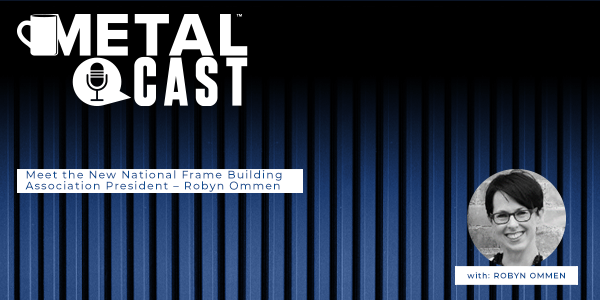
Meet the New National Frame Building Association President – Robyn Ommen: PODCAST TRANSCRIPT
Read More ...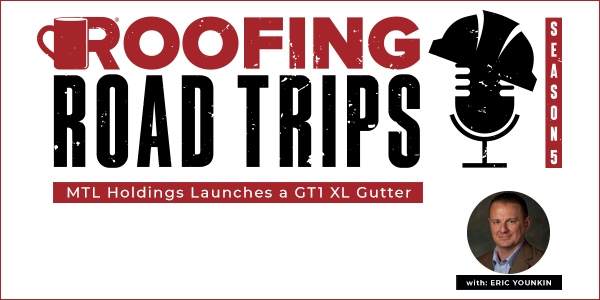
Eric Younkin - MTL Holdings Launches a GT1 XL Gutter - PODCAST TRANSCRIPTION
Read More ...

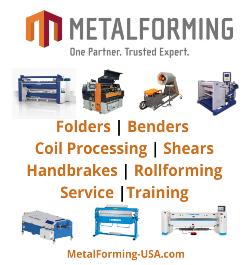


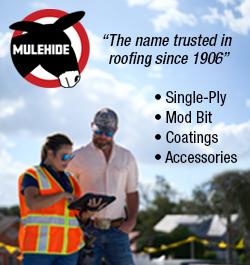


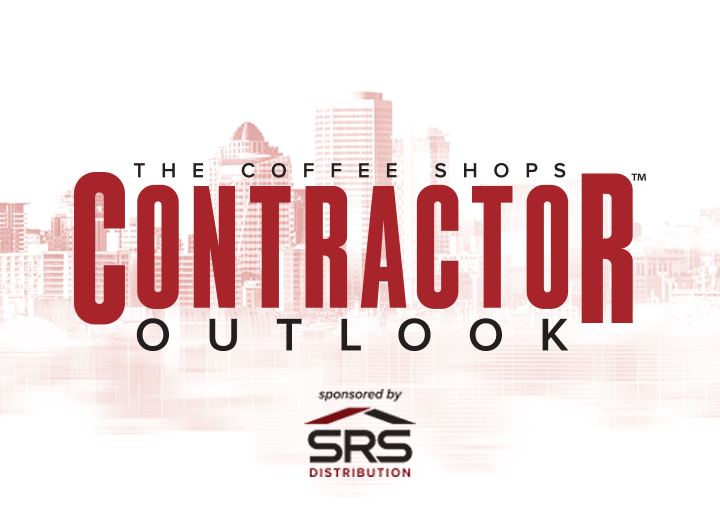

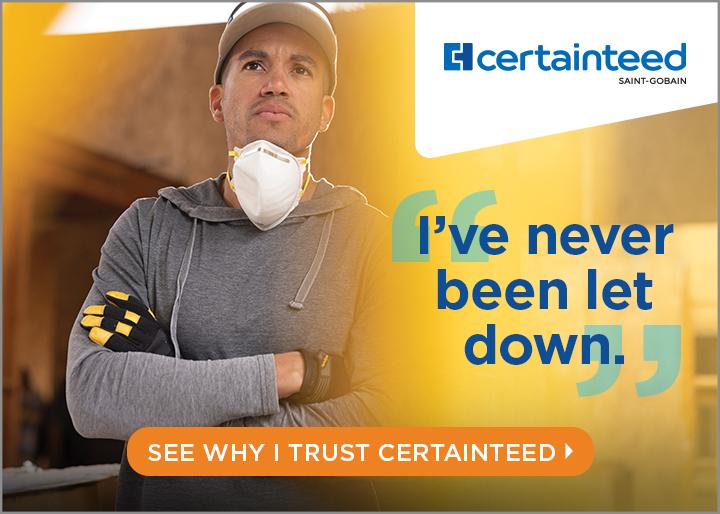
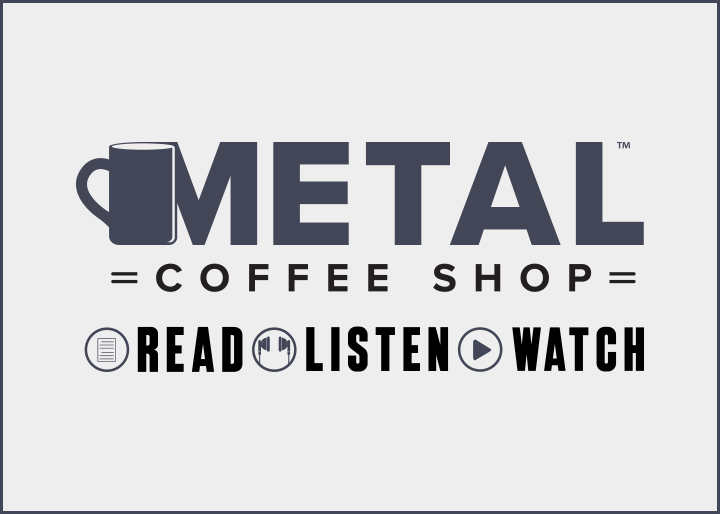

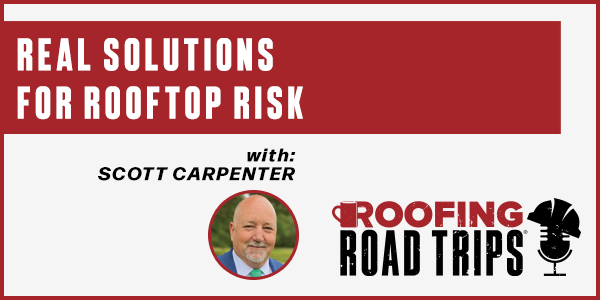
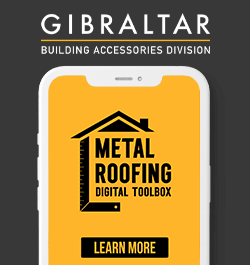
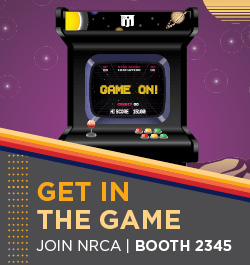

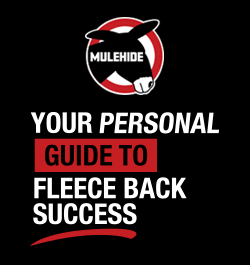
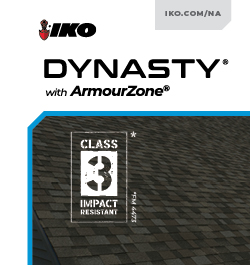
Comments
Leave a Reply
Have an account? Login to leave a comment!
Sign In